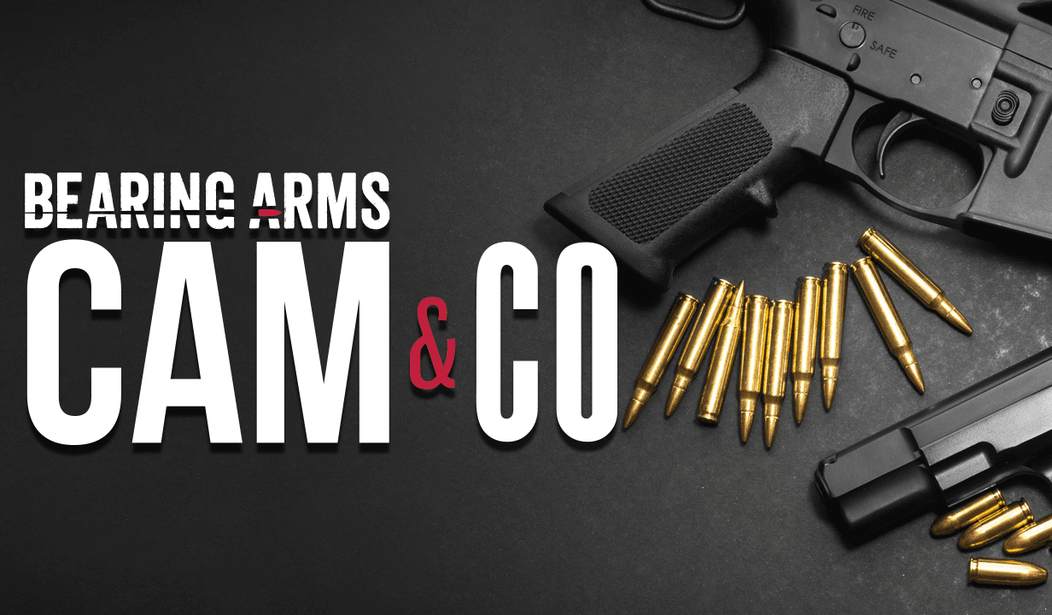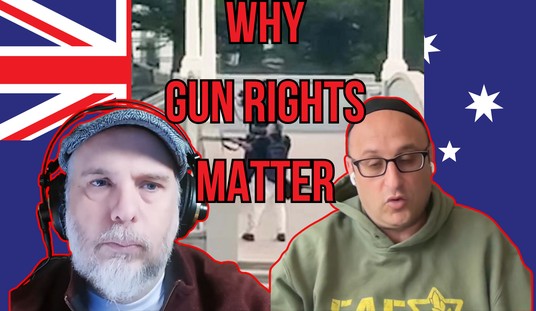Is the Second Amendment an out-of-date relic of history that was only meant to protect service in a militia? Fifteen years after the Supreme Court put that myth to rest, anti-gunners are still bitterly clinging to the notion that by claiming the Second Amendment is an anachronism they can make it so, even as millions of Americans are embracing their individual right to keep and bear arms for the first time in their lives.
On today’s Bearing Arms’ Cam & Co we’re looking at one of the latest efforts in that regard. At Salone, Kirk Swearingen declares the Second Amendment is “as antique as a muzzle-loaded long gun, and should be treated as a historical artifact” because he believes it’s all about militia service.
We’ve said it before, but it is always worth repeating for the millions of younger people coming to voting age each year who may not have considered it before: It doesn’t take a grammarian or a constitutional scholar to tell you that the opening clause of the Second Amendment is obviously conditional:
A well regulated Militia, being necessary to the security of a free State, the right of the people to keep and bear Arms, shall not be infringed.
Meaning, so long as a militia of citizens is necessary (and a well-regulated one, at that), then what follows is true. But only if that first part pertains.
It no longer pertains and hasn’t since the modern National Guard was formally established in 1916. We’ve got the Army, Navy, Marines, Coast Guard, Air Force and even that Space Force thing, as well as the National Guard, with members who swear an oath to both their state and their federal governments. (I note that dual allegiance for all the anti-federalists still lurking out there, seething about some “tyranny” of the federal government, while at the state and local levels you busy yourself with taking away voting rights, reproductive rights, public schools and public libraries.)
The six branches of the armed forces, including the National Guard. No other militia need apply. It’s covered.
Except, of course, that the Supreme Court has already declared Swearingen’s argument nonsensical back in the Heller acknowledgeddecision. Justice Antonin Scalia that the Second Amendment may have been codified because of concerns that the nascent federal government would pull a King George III and would one day target state-level militias, but pointed out that the right to keep and bear arms predated both the Bill of Rights and the Constitution itself.
We reach the question, then: Does the preface fit with an operative clause that creates an individual right to keep and bear arms? It fits perfectly, once one knows the history that the founding generation knew and that we have described above. That history showed that the way tyrants had eliminated a militia consisting of all the able-bodied men was not by banning the militia but simply by taking away the people’s arms, enabling a select militia or standing army to suppress political opponents. This is what had occurred in England that prompted codification of the right to have arms in the English Bill of Rights.
The debate with respect to the right to keep and bear arms, as with other guarantees in the Bill of Rights, was not over whether it was desirable (all agreed that it was) but over whether it needed to be codified in the Constitution. During the 1788 ratification debates, the fear that the federal government would disarm the people in order to impose rule through a standing army or select militia was pervasive in Antifederalist rhetoric. John Smilie, for example, worried not only that Congress’s “command of the militia” could be used to create a “select militia,” or to have “no militia at all,” but also, as a separate concern, that “[w]hen a select militia is formed; the people in general may be disarmed.” Federalists responded that because Congress was given no power to abridge the ancient right of individuals to keep and bear arms, such a force could never oppress the people. It was understood across the political spectrum that the right helped to secure the ideal of a citizen militia, which might be necessary to oppose an oppressive military force if the constitutional order broke down.
It is therefore entirely sensible that the Second Amendment’s prefatory clause announces the purpose for which the right was codified: to prevent elimination of the militia. The prefatory clause does not suggest that preserving the militia was the only reason Americans valued the ancient right; most undoubtedly thought it even more important for self-defense and hunting. But the threat that the new Federal Government would destroy the citizens’ militia by taking away their arms was the reason that right—unlike some other English rights—was codified in a written Constitution. ustice Breyer’s assertion that individual self-defense is merely a “subsidiary interest” of the right to keep and bear arms, see post, at 36, is profoundly mistaken. He bases that assertion solely upon the prologue—but that can only show that self-defense had little to do with the right’s codification; it was the central component of the right itself.
Even if you want to reject the originalist approach to the Second Amendment in favor of treating the Constitution as a “living document” whose meaning changes based on modern interpretations as opposed to the actual text, Swearingen’s argument falls flat. There are somewhere around 100-million Americans who own guns today, and the number continues to grow. More than 24-million Americans possess a concealed carry license at the moment, and millions more are lawfully carrying in states where no government-issued permission slip is necessary.
The vast majority of state constitutions also protect an individual right to keep and bear arms, including an amendment approved by Iowa voters just last November. Swearingen might think the Second Amendment is an anachronistic relic of the past, but his view isn’t one held by most Americans or the Supreme Court.
I’ve honestly lost track of how many similar arguments I’ve seen in nearly 20 years of covering Second Amendment issues, but I have yet to see a serious effort on the part of anti-gunners like Swearingen to actually repeal and replace the current language with something more to their liking. They huff, they puff, they bemoan the status quo… and then they generally move on to writing about something else. They may hate our Second Amendment rights, but at the end of the day they know that they’re not able to eradicate it from the Constitution any more than they’re going to make the country one giant gun-free zone. Too many Americans today understand and appreciate the importance of armed self-defense to allow for the Second Amendment’s repeal or its re-imagining as a right to join the military or police as Swearingen would have it. Despite all the bluster and bloviating from gun prohibitionists, in fact, the number of Americans embracing their fundamental right to keep and bear arms is growing, not shrinking. It’s not just courts of law that have rejected the gun prohibition argument. The courts of public opinion have and continue to do the same.
Here’s the embed:









Join the conversation as a VIP Member